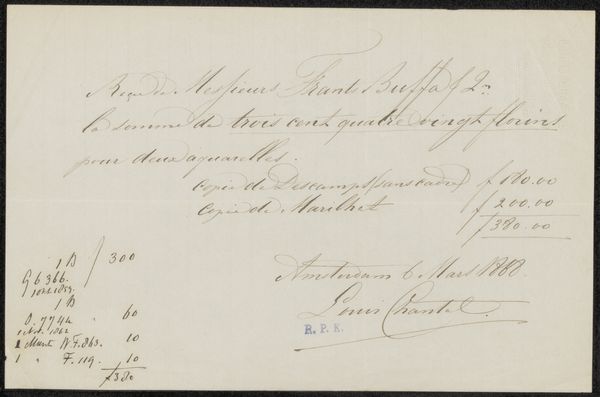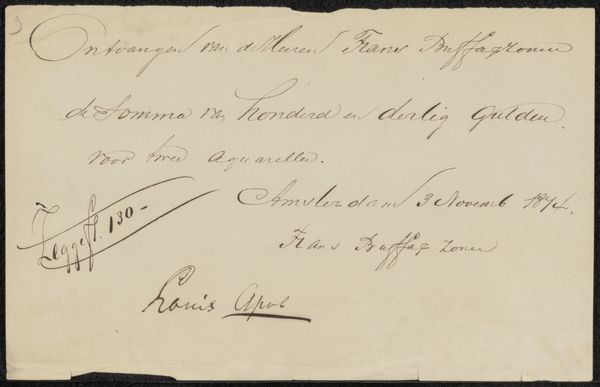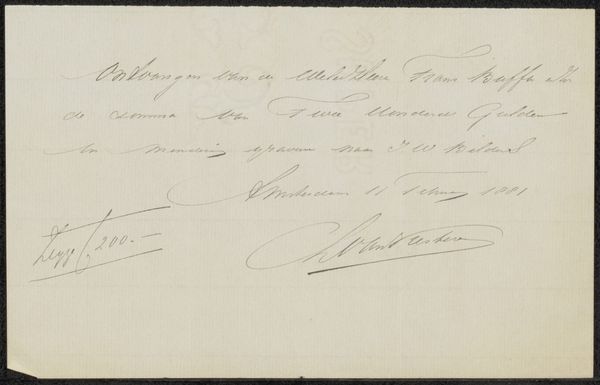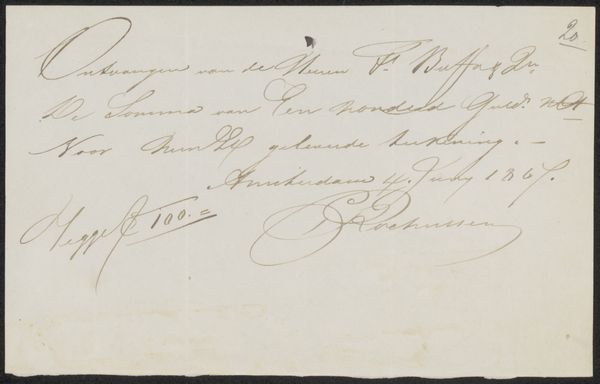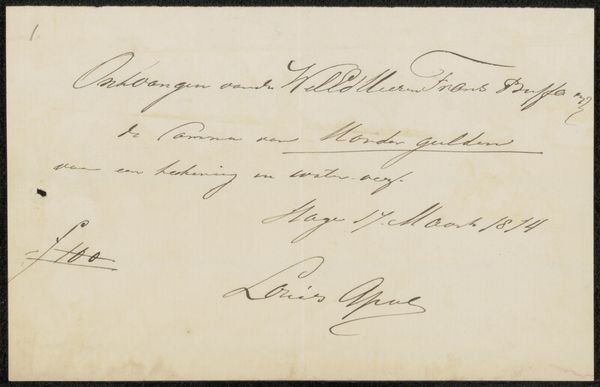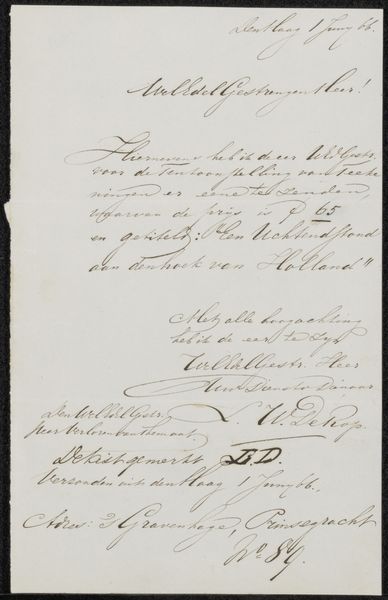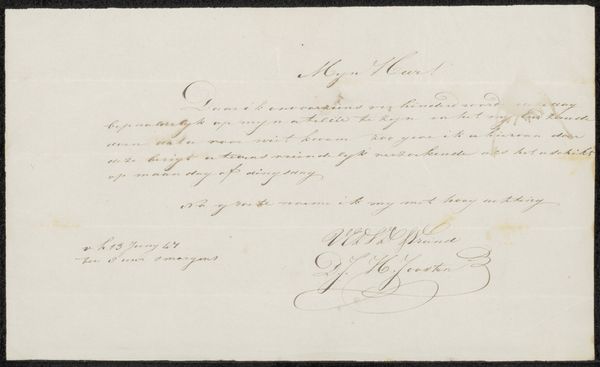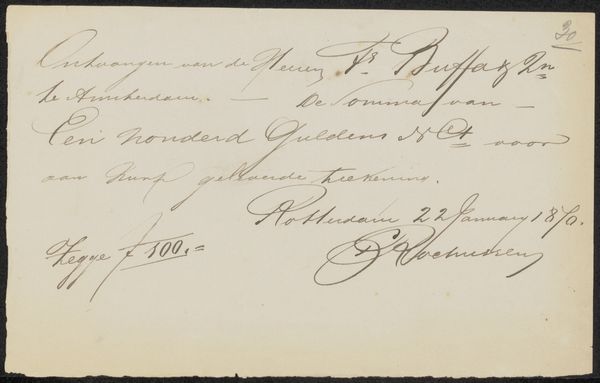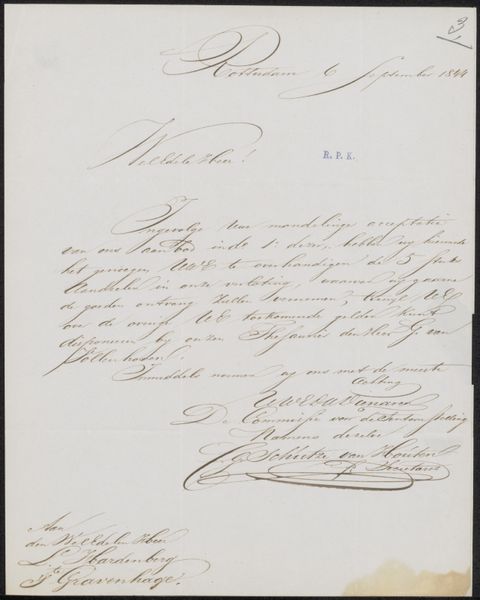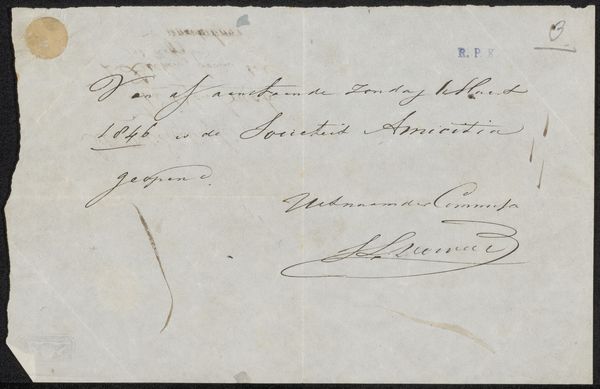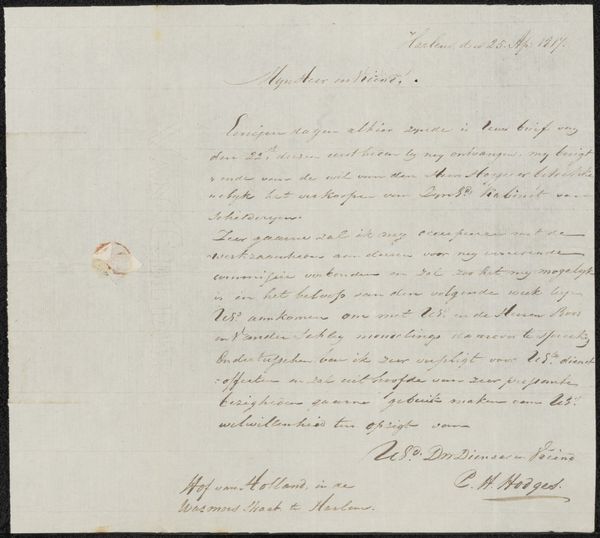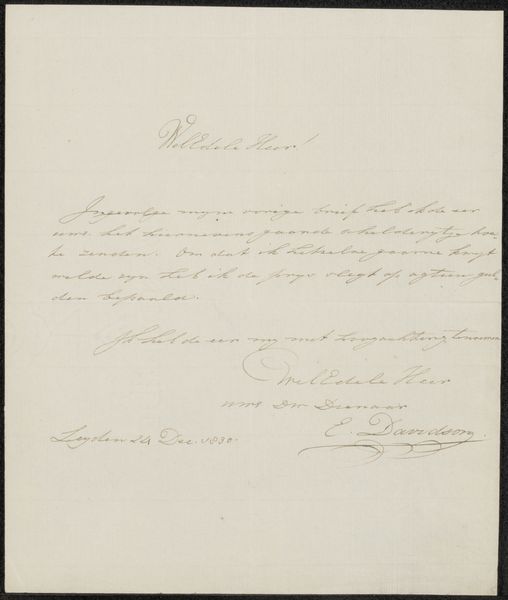
drawing, paper, ink, pen
#
portrait
#
drawing
#
dutch-golden-age
#
pen sketch
#
incomplete sketchy
#
hand drawn type
#
paper
#
personal sketchbook
#
ink
#
ink drawing experimentation
#
pen-ink sketch
#
ink colored
#
pen work
#
sketchbook drawing
#
pen
#
academic-art
#
sketchbook art
#
calligraphy
Copyright: Rijks Museum: Open Domain
Curator: This intriguing piece, penned by Abraham Lion Zeelander around 1850-1855, is titled "Brief aan Johannes Bosboom"—or "Letter to Johannes Bosboom." It is executed in pen and ink on paper. Editor: Immediately striking is the fragility of the work. The delicate lines of ink, combined with what looks like a personal note, create an intimate feeling. Curator: Indeed, these sketches, combined with the handwriting, give us a peek into the world of artistic correspondence during the Dutch Golden Age, when letter-writing was a central form of intellectual exchange. Notice Zeelander's reference to Johannes Bosboom. Zeelander appeals to the established painter using refined, formulaic language and thus hopes to enter Bosboom's personal network of artists and patrons. Editor: Precisely, I'm fascinated by how the eye moves through the composition. The scripted lines, organized horizontally, create an ebb and flow. The flourishes add dynamism. But in purely formal terms, the drawing suggests incompleteness: a moment captured mid-thought, perhaps? Curator: Yes, consider also the social conditions surrounding such a letter. In that era, access to established artists meant access to exhibition opportunities, commissions, and a kind of social validation that determined artistic success. Editor: Looking closely at the ink work, one notices changes in pressure. These suggest a rhythm between the lines of the calligraphy, or perhaps reveal changes in his thought process as he wrote to Bosboom? The negative space is as meaningful as the active lines of ink, a very intentional act. Curator: A successful approach might translate into not just a new artistic connection, but elevation in the 19th-century Dutch art scene, as access determined one's reputation in institutional settings. It is also fascinating how artistic identity had to be strategically self-fashioned through carefully constructed correspondences, to fit the established styles. Editor: A fascinating snapshot, then—not just of Zeelander's artistic hand, but of his ambition as well, and expressed in such careful visual terms. Curator: Right, a visual encoding of social practice and artistic self-presentation through handwritten ink on paper, carefully pitched and composed to an influential colleague.
Comments
No comments
Be the first to comment and join the conversation on the ultimate creative platform.
